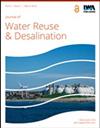Treatment of landfill leachate with different techniques: an overview
IF 2.3
Q2 Environmental Science
引用次数: 60
Abstract
Landfill leachate is characterised by high chemical and biological oxygen demand and generally consists of undesirable substances such as organic and inorganic contaminants. Landfill leachate may differ depending on the content and age of landfill contents, the degradation procedure, climate and hydrological conditions. We aimed to explain the characteristics of landfill leachate and define the practicality of using different techniques for treating landfill leachate. Different treatments comprising biological methods (e.g. bioreactors, bioremediation and phytoremediation) and physicochemical approaches (e.g. advanced oxidation processes, adsorption, coagulation/flocculation and membrane filtration) were investigated in this study. Membrane bioreactors and integrated biological techniques, including integrated anaerobic ammonium oxidation and nitrification/denitrification processes, have demonstrated high performance in ammonia and nitrogen elimination, with a removal effectiveness of more than 90%. Moreover, improved elimination efficiency for suspended solids and turbidity has been achieved by coagulation/flocculation techniques. In addition, improved elimination of metals can be attained by combining different treatment techniques, with a removal effectiveness of 40–100%. Furthermore, combined treatment techniques for treating landfill leachate, owing to its high chemical oxygen demand and concentrations of ammonia and low biodegradability, have been reported with good performance. However, further study is necessary to enhance treatment methods to achieve maximum removal efficiency.不同技术处理垃圾渗滤液:概述
垃圾渗滤液的特点是化学和生物需氧量高,通常由有机和无机污染物等不良物质组成。垃圾渗滤液可能因垃圾填埋物的含量和年龄、降解过程、气候和水文条件而异。我们旨在解释垃圾渗滤液的特性,并确定使用不同技术处理垃圾渗滤液是否可行。本研究研究研究了不同的处理方法,包括生物方法(如生物反应器、生物修复和植物修复)和物理化学方法(如高级氧化过程、吸附、混凝/絮凝和膜过滤)。膜生物反应器和综合生物技术,包括综合厌氧氨氧化和硝化/反硝化工艺,在氨和氮的去除方面表现出了很高的性能,去除效率超过90%。此外,通过混凝/絮凝技术提高了对悬浮固体和浊度的去除效率。此外,通过结合不同的处理技术,可以提高金属的去除率,去除率为40-100%。此外,由于垃圾渗滤液的化学需氧量和氨浓度高,可生物降解性低,联合处理技术已被报道具有良好的性能。然而,有必要进一步研究,以提高处理方法,达到最大的去除效率。
本文章由计算机程序翻译,如有差异,请以英文原文为准。
求助全文
约1分钟内获得全文
求助全文
来源期刊

Journal of Water Reuse and Desalination
ENGINEERING, ENVIRONMENTAL-WATER RESOURCES
CiteScore
4.30
自引率
0.00%
发文量
23
审稿时长
16 weeks
期刊介绍:
Journal of Water Reuse and Desalination publishes refereed review articles, theoretical and experimental research papers, new findings and issues of unplanned and planned reuse. The journal welcomes contributions from developing and developed countries.
 求助内容:
求助内容: 应助结果提醒方式:
应助结果提醒方式:


